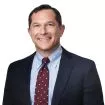- within Compliance and Consumer Protection topic(s)
Seyfarth Synopsis: With a single utterance at the recent Academy Awards ceremony, "inclusion rider" entered the popular lexicon. That has led many to wonder, "What is an inclusion rider?" The next question, of course, is this: "Is an inclusion rider enforceable?"
What is an inclusion rider? In most respects, this is an entertainment industry term for the more commonly known NFL Rooney Rule. The Rooney Rule requires league teams to interview minority candidates for head coaching and senior football operation jobs—the intent being to create equal opportunity. When we think of "riders" relating to the entertainment industry, what most often comes to mind are musicians' riders: requirements that particular food and beverages be present backstage (e.g., X cases of a particular beer, Y bottles of a particular champagne, and Z sandwiches from a particular shop). An inclusion rider is a provision in an actor's contract that requires the producer to hire members of historically underrepresented groups (e.g., people of color, women, the LGBTQ community). The idea is that high-powered actors can demand that both the cast and those working "below the line" (the crew) demographically reflect our society.
Some thus envision inclusion riders as providing specific hiring quotas. Frances McDormand (who introduced "inclusion rider" to the world after winning the Oscar for Best Actress in "Three Billboards Outside Ebbing, Missouri") elaborated on her proposal during an Oscar after-party: "You can ask for or demand at least 50% diversity in the casting and the crew."
But would this kind of inclusion rider be enforceable? In 2009, in Ricci v. DeStefano, the U.S. Supreme Court concluded that "before an employer can engage in intentional discrimination for the asserted purpose of avoiding or remedying an unintentional disparate impact, the employer must have a strong basis in evidence to believe it will be subject to disparate-impact liability if it fails to take the race-conscious, discriminatory action." In other words, hiring quotas are permissible only if an employer needs the quota to avoid being accused of having facially neutral hiring practices that have an unintended disproportionate impact on a particular (protected) demographic segment of the population.
Demanding that an employer hire at specified diversity levels would almost certainly fly in the face of Ricci, and an employer would accommodate such a rider at its legal peril.
While a specific hiring quota might be unenforceable, the same is likely not true of an inclusion rider that more closely mirrors the Rooney Rule. If an inclusion rider merely requires that a producer interview for cast and crew in a way that reflects the available talent—or even, more broadly, societal demographics—the rider would be unlikely to face the same legal challenges as a hiring quota. Query whether something in between, such as stated aspirational goals (but not mandates) for diverse hiring, would pass muster.
So what does this mean for employers? McDormand's acceptance speech—referring to a concept involving employment negotiations in the entertainment industry—can inspire conversations about hiring in every industry. When a prospective employer is evaluating a demand for an "inclusion rider," the employer must keep Ricci's instruction in mind: is the demand that the employer impose a hiring quota, or is the demand that the employer intentionally expand interviewing and employment opportunities for diverse candidates? While the latter approach can be defensible, the proverbial curtain will almost surely drop on the former practice as soon as it begins.
The content of this article is intended to provide a general guide to the subject matter. Specialist advice should be sought about your specific circumstances.
[View Source]

